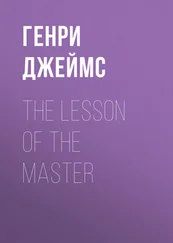Генри Джеймс - The Portrait of a Lady — Volume 1
Здесь есть возможность читать онлайн «Генри Джеймс - The Portrait of a Lady — Volume 1» — ознакомительный отрывок электронной книги совершенно бесплатно, а после прочтения отрывка купить полную версию. В некоторых случаях можно слушать аудио, скачать через торрент в формате fb2 и присутствует краткое содержание. Жанр: Зарубежные любовные романы, foreign_antique, foreign_prose, на английском языке. Описание произведения, (предисловие) а так же отзывы посетителей доступны на портале библиотеки ЛибКат.
- Название:The Portrait of a Lady — Volume 1
- Автор:
- Жанр:
- Год:неизвестен
- ISBN:нет данных
- Рейтинг книги:3 / 5. Голосов: 1
-
Избранное:Добавить в избранное
- Отзывы:
-
Ваша оценка:
- 60
- 1
- 2
- 3
- 4
- 5
The Portrait of a Lady — Volume 1: краткое содержание, описание и аннотация
Предлагаем к чтению аннотацию, описание, краткое содержание или предисловие (зависит от того, что написал сам автор книги «The Portrait of a Lady — Volume 1»). Если вы не нашли необходимую информацию о книге — напишите в комментариях, мы постараемся отыскать её.
The Portrait of a Lady — Volume 1 — читать онлайн ознакомительный отрывок
Ниже представлен текст книги, разбитый по страницам. Система сохранения места последней прочитанной страницы, позволяет с удобством читать онлайн бесплатно книгу «The Portrait of a Lady — Volume 1», без необходимости каждый раз заново искать на чём Вы остановились. Поставьте закладку, и сможете в любой момент перейти на страницу, на которой закончили чтение.
Интервал:
Закладка:
Henry James
The Portrait of a Lady — Volume 1
PREFACE
“ The Portrait of a Lady ” was, like “ Roderick Hudson ,” begun in Florence, during three months spent there in the spring of 1879. Like “ Roderick ” and like “ The American ,” it had been designed for publication in “ The Atlantic Monthly ,” where it began to appear in 1880. It differed from its two predecessors, however, in finding a course also open to it, from month to month, in “ Macmillan’s Magazine ”; which was to be for me one of the last occasions of simultaneous “serialisation” in the two countries that the changing conditions of literary intercourse between England and the United States had up to then left unaltered. It is a long novel, and I was long in writing it; I remember being again much occupied with it, the following year, during a stay of several weeks made in Venice. I had rooms on Riva Schiavoni, at the top of a house near the passage leading off to San Zaccaria; the waterside life, the wondrous lagoon spread before me, and the ceaseless human chatter of Venice came in at my windows, to which I seem to myself to have been constantly driven, in the fruitless fidget of composition, as if to see whether, out in the blue channel, the ship of some right suggestion, of some better phrase, of the next happy twist of my subject, the next true touch for my canvas, mightn’t come into sight. But I recall vividly enough that the response most elicited, in general, to these restless appeals was the rather grim admonition that romantic and historic sites, such as the land of Italy abounds in, offer the artist a questionable aid to concentration when they themselves are not to be the subject of it. They are too rich in their own life and too charged with their own meanings merely to help him out with a lame phrase; they draw him away from his small question to their own greater ones; so that, after a little, he feels, while thus yearning toward them in his difficulty, as if he were asking an army of glorious veterans to help him to arrest a peddler who has given him the wrong change.
There are pages of the book which, in the reading over, have seemed to make me see again the bristling curve of the wide Riva, the large colour-spots of the balconied houses and the repeated undulation of the little hunchbacked bridges, marked by the rise and drop again, with the wave, of foreshortened clicking pedestrians. The Venetian footfall and the Venetian cry—all talk there, wherever uttered, having the pitch of a call across the water—come in once more at the window, renewing one’s old impression of the delighted senses and the divided, frustrated mind. How can places that speak in general so to the imagination not give it, at the moment, the particular thing it wants? I recollect again and again, in beautiful places, dropping into that wonderment. The real truth is, I think, that they express, under this appeal, only too much—more than, in the given case, one has use for; so that one finds one’s self working less congruously, after all, so far as the surrounding picture is concerned, than in presence of the moderate and the neutral, to which we may lend something of the light of our vision. Such a place as Venice is too proud for such charities; Venice doesn’t borrow, she but all magnificently gives. We profit by that enormously, but to do so we must either be quite off duty or be on it in her service alone. Such, and so rueful, are these reminiscences; though on the whole, no doubt, one’s book, and one’s “literary effort” at large, were to be the better for them. Strangely fertilising, in the long run, does a wasted effort of attention often prove. It all depends on how the attention has been cheated, has been squandered. There are high-handed insolent frauds, and there are insidious sneaking ones. And there is, I fear, even on the most designing artist’s part, always witless enough good faith, always anxious enough desire, to fail to guard him against their deceits.
Trying to recover here, for recognition, the germ of my idea, I see that it must have consisted not at all in any conceit of a “plot,” nefarious name, in any flash, upon the fancy, of a set of relations, or in any one of those situations that, by a logic of their own, immediately fall, for the fabulist, into movement, into a march or a rush, a patter of quick steps; but altogether in the sense of a single character, the character and aspect of a particular engaging young woman, to which all the usual elements of a “subject,” certainly of a setting, were to need to be super added. Quite as interesting as the young woman herself at her best, do I find, I must again repeat, this projection of memory upon the whole matter of the growth, in one’s imagination, of some such apology for a motive. These are the fascinations of the fabulist’s art, these lurking forces of expansion, these necessities of upspringing in the seed, these beautiful determinations, on the part of the idea entertained, to grow as tall as possible, to push into the light and the air and thickly flower there; and, quite as much, these fine possibilities of recovering, from some good standpoint on the ground gained, the intimate history of the business—of retracing and reconstructing its steps and stages. I have always fondly remembered a remark that I heard fall years ago from the lips of Ivan Turgenieff in regard to his own experience of the usual origin of the fictive picture. It began for him almost always with the vision of some person or persons, who hovered before him, soliciting him, as the active or passive figure, interesting him and appealing to him just as they were and by what they were. He saw them, in that fashion, as disponibles, saw them subject to the chances, the complications of existence, and saw them vividly, but then had to find for them the right relations, those that would most bring them out; to imagine, to invent and select and piece together the situations most useful and favourable to the sense of the creatures themselves, the complications they would be most likely to produce and to feel.
“To arrive at these things is to arrive at my story,” he said, “and that’s the way I look for it. The result is that I’m often accused of not having ‘story’ enough. I seem to myself to have as much as I need—to show my people, to exhibit their relations with each other; for that is all my measure. If I watch them long enough I see them come together, I see them placed , I see them engaged in this or that act and in this or that difficulty. How they look and move and speak and behave, always in the setting I have found for them, is my account of them—of which I dare say, alas, que cela manque souvent d’architecture . But I would rather, I think, have too little architecture than too much—when there’s danger of its interfering with my measure of the truth. The French of course like more of it than I give—having by their own genius such a hand for it; and indeed one must give all one can. As for the origin of one’s wind-blown germs themselves, who shall say, as you ask, where they come from? We have to go too far back, too far behind, to say. Isn’t it all we can say that they come from every quarter of heaven, that they are there at almost any turn of the road? They accumulate, and we are always picking them over, selecting among them. They are the breath of life—by which I mean that life, in its own way, breathes them upon us. They are so, in a manner prescribed and imposed—floated into our minds by the current of life. That reduces to imbecility the vain critic’s quarrel, so often, with one’s subject, when he hasn’t the wit to accept it. Will he point out then which other it should properly have been?—his office being, essentially to point out. Il en serait bien embarrassé . Ah, when he points out what I’ve done or failed to do with it, that’s another matter: there he’s on his ground. I give him up my ‘sarchitecture,’” my distinguished friend concluded, “as much as he will.”
Читать дальшеИнтервал:
Закладка:
Похожие книги на «The Portrait of a Lady — Volume 1»
Представляем Вашему вниманию похожие книги на «The Portrait of a Lady — Volume 1» списком для выбора. Мы отобрали схожую по названию и смыслу литературу в надежде предоставить читателям больше вариантов отыскать новые, интересные, ещё непрочитанные произведения.
Обсуждение, отзывы о книге «The Portrait of a Lady — Volume 1» и просто собственные мнения читателей. Оставьте ваши комментарии, напишите, что Вы думаете о произведении, его смысле или главных героях. Укажите что конкретно понравилось, а что нет, и почему Вы так считаете.












